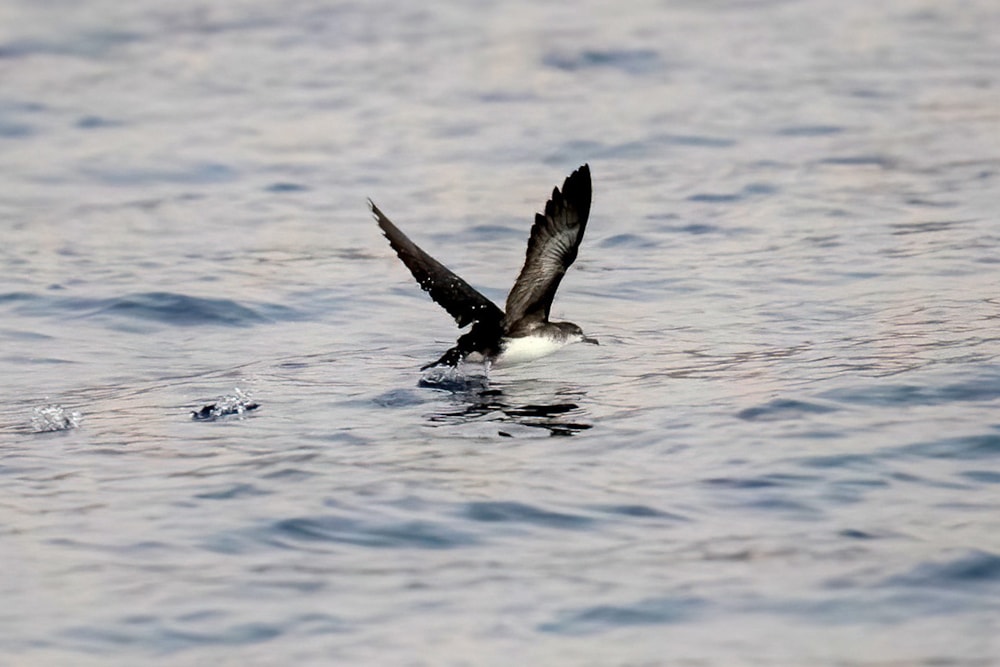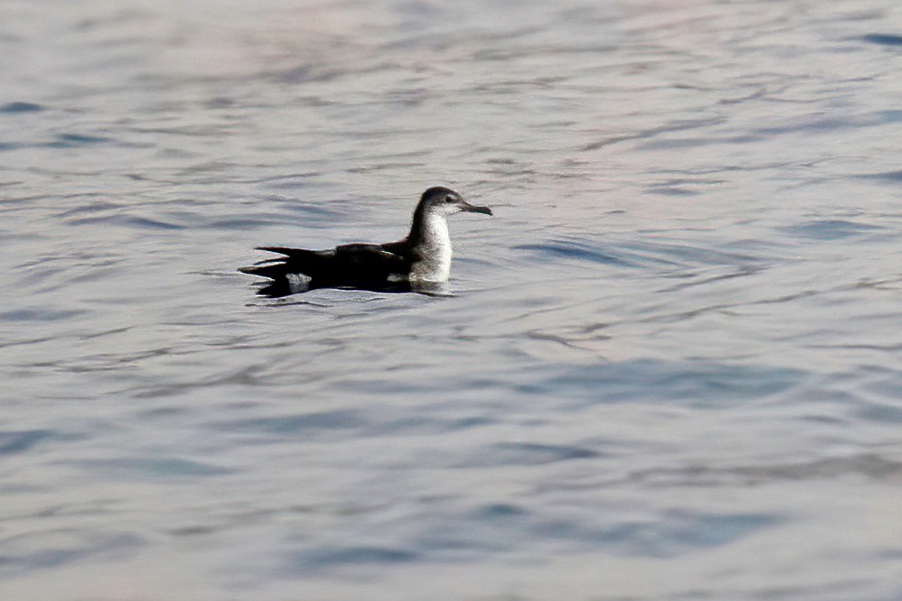Usually, October is not the time for seawatching off Eilat. The interesting terns have left and the winter seabirds are still to arrive – and the weather is too cold for a dip in the water, too. However, this year is different. It is still freakishly warm, with temperatures of 37 celsius, the White-cheeked Terns are still here in huge numbers (they had a great breeding season), and during our deep-water seabird monitoring we even recorded a Swinhoe's Storm Petrel, which have usually departed by September. And then there's Shachar Shalev ...
Our dedicated volunteer is stubborn. He checks the North and South Beaches regularly, even in October. So, as usual, it is he who finds the good birds, as he is always out in the field and his eyes are sharp. When Shachar reported a 'black-and-white' shearwater – a Yelkouan or Manx – it sounded like another bird I would never relocate. However, I had a free afternoon and went straight to the beach.
My expectations for a deserted beach due to the COVID-19 lockdown were rapidly replaced by the reality of dozens of house trailers, loud music and the sticky smell of BBQs – the usual. However the sea was as flat as a mirror, with no shearwater for miles. Suddenly, a very small-looking black-and-white shearwater made its way towards me from the south. The darker the evening got, the closer it approached us, however, through my Zeiss scope it was clear it had black undertail coverts, a dark area next to its legs and an unusual underwing pattern. It reminded me of Sooty Shearwater – a long pale patch framed by a dark border.
I wasn't sure which shearwater species looked like this one, but I knew it couldn't be a Manx or Yelkouan. A few minutes on the phone revealed that it could only be a Persian Shearwater, with all of the features noted above ruling out the other possibilities. But who would accept such an observation? I had failed to obtain a photograph, even at long range or badly lit. So I posted the news to all relevant rare bird groups that there was a probable Persian Shearwater off Eilat, or something equally interesting.

Israel's third Persian Shearwater was expertly relocated by a crack team of birder-filled boats on the Israel-Jordan border, much to the chagrin of the Israeli Navy (Amir Ben Dov).
The obsession of birders to solve every mystery and see every rare bird proved the solution to Eilat's Persian problem, and it wasn't long until Amir Ben Dov was on the phone. Mysteries are Amir's thing, and the following afternoon saw two teams in two boats out onto the sea, searching. I was on the beach with my trusty scope, directing them towards distant concentrations of seabirds. The sea, once again, was as flat as a mirror. No shearwaters for miles. But Amir never gives up. Out of nowhere, the tiny black-and-white seafarer appeared, sitting on the water, deep in Jordanian waters ...
The two boats made their move and approached it, as well as the buoys that mark the Jordan-Israel border. The Navy's heavily-armed border patrol boat opened its engines, fast and angry. I quickly calculated the time it'll take the Navy to reach our boats – 90 seconds, maybe less. The officer on the Navy boat screamed through its giant speakers. He was furious. All of Eilat and Aqaba (in neighbouring Jordan) could hear and see the drama. However, Amir wasn't phased, and I could see through my scope that he continued taking photographs. Two minutes later, Amir's pictures were already on my phone. We made it.
Before the boats docked had returned to shore, Hadoram Shirihai had already confirmed the identification – it was a juvenile Persian Shearwater! Furthermore, it was shown to belong to the nominate subspecies, with Mohéli Shearwater (P p temptator) of the Comoro Islands ruled out thanks to a white upper loral mark just in front of and above the eye, which is present in persicus but usually lacking in temptator.

The white loral mark just in front of and above the eye helps to seal the identity as a Persian Shearwater (Amir Ben Dov).
Formerly treated as a subspecies of the closely related Audubon's Shearwater, Persian Shearwater differs in plumage, measurements and biology. The persicus subspecies breeds in Oman, with the species native to the Arabian Sea and the Indian Ocean. A colonial species that nests in small burrows and crevices on atolls and rocky islets, it is a common non-breeding visitor to the coasts of Iran, United Arab Emirates and Yemen, however it remains rare in the Red Sea.
Persian Shearwater has never been previously observed off Eilat or in the Israeli Red Sea, but there are two records from the Israeli Mediterranean from the winters of 1985 and 1989. It has also been recorded as a rare vagrant in Kuwait, with a remarkable flock of 25 near Shuaiba in mid-May 1957 the most notable.
The Israeli migration hot-spot has hosted several rare tropical seabirds in the past, and is renowned as one of the best places for rare seabirds in the Western Palearctic. This has included the only two Western Palearctic records of another mega Puffinus – Tropical Shearwater – from June 1992 and May 1999, while it also played host to one of two Western Palearctic records of Flesh-footed Shearwater in August 1980, and three records of Streaked Shearwater – from 1992, 1993 and 2003. Other notable records include both regional records of Atlantic Petrel – from May 1982 and April 1989 – a Soft-plumaged Petrel from March 1997, two Lesser Frigatebirds from December 1997 and May 1999, a sub-adult male Shy Albatross in February and March 1981, and, most notably, the first and only Brown-headed Gull for the Western Palearctic in May 1985.
Nowadays, the seas off Eilat tend to be incredibly crowded with motorboats, jetskis, windsurfers, tourist boats and giant commercial vessels – all of which struggle to find space to move around. Unsurprisingly, this leaves very little space for seabirds, and we tend to see less of them than in years gone by. An unexpected positive of the coronavirus closures; the seas were cleared and the seabirds came back!


